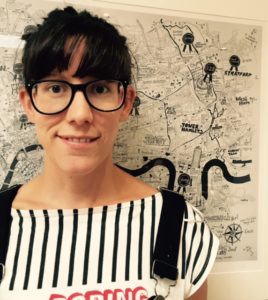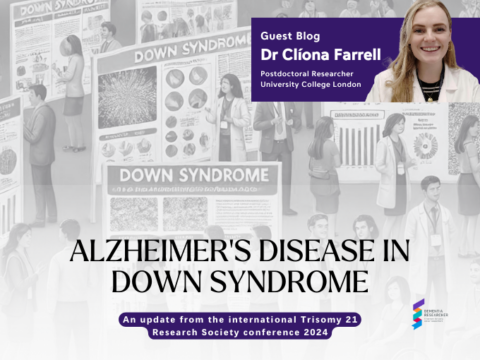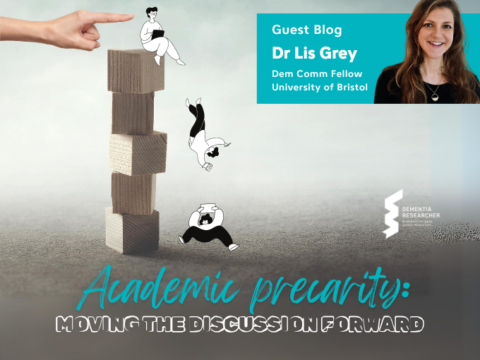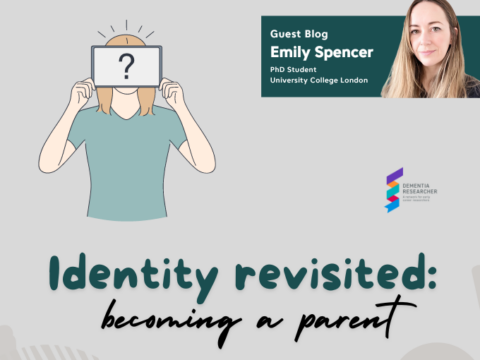
As a clinical speech and language therapist I regularly spoke to patients, their families and other professionals. I might present in ward round meetings, or even larger groups, providing training sessions on topics such as basic dysphagia awareness, communication skills and the role of the SLT. Although I did use PowerPoint slides I used it to catch people’s attention – using pictures and key words were the most helpful. PowerPoint was generally considered a bit flashy and I only used tables and charts on the rare occasions that I presented to commissioners.
Then I transitioned to academia and it all got serious. I had my first taste of this when I had to present at my NIHR Doctoral Research Fellowship interview four years ago. Five minutes to communicate the project, convey my enthusiasm and passion, and demonstrate myself to be a critical thinker. No brightly coloured pictures. The slides needed to include the key points, so that I could elaborate on them. The narrative had to be tightly planned and practised.
Then, when I started my PhD I realised I would need to present a lot more; at serious scientific conferences, to service users and the public. Alongside the teaching of student SLTs and other professionals that I had (excitingly) been invited to do, this seemed like a lot of presenting. I felt I needed advice and help on how to do this properly. Training in the art of presenting. So I went on a couple of in-house courses on how to present. I watched what others did to better understand what I wanted to do more of and what I wanted to avoid. I asked the experts in my department for advice and I asked the same experts to give me feedback about my slides and my presentation style. I also asked my peers – I practised with them and anyone at all who would listen. This is what I know so far (stressing ‘so far’ – I still feel I have much to learn about this specific skill):
Plan your slides with your audience in mind. Find out exactly what is required for the talk you are giving. What is the time limit for your talk versus questions, do they ask for a certain number of slides, what is it they want you to talk about? If you are presenting at a scientific conference they may say you have a 10 minute window, but if you look closely 2 of those minutes may be for questions. If you have been asked to speak to a group they often have an agenda in mind- and a specific audience to please. Are they students (who know nothing about the background to your work and are used to longer lectures but benefit from activities to support their learning), are they health professionals (if so what kind- they may only really be interested in what your research means for the people they are working with, and I find many health professionals benefit from time to consolidate knowledge by discussing case studies plus they often have lots of questions), are they academics (who may like to hear more about your research methods and results- this audience may expect a more traditional presentation) or are they members of the public (which is tricky but again think about what they want to know- are they service users and family members finding out cutting edge information, getting an overview of your discipline or just gathering tips and hints for their own lives?)
How many slides? Less is generally better. I tend to opt for approximately 1 per minute or two, depending on the content of the slide. 20-30 slides for a 40 minute presentation seems about right.
Can I use images? Well consider your audience again. I would suggest that less academic audiences benefit from more pictures that drive a point home and help them remember things, whilst academic audiences benefit from less pictures.
How much writing per slides? Less is better (as a general rule). Remember that your audience are trying to listen AND read at the same time. I tend to aim to use no more than 6 bullet points at a time, and try to ensure the text spans no more than a line or so (maybe a line and half) per bullet. And apply this to both academic and non-academic audiences. For service users and families I would reduce this further, and perhaps highlight key words.
What about style and font? I would generally suggest to stay fairly serious with the slide formatting – use your university or organisation header, or use a plain white background. Maybe use some small key images to guide the reader through topics. As a general rule I would stick with white background with black or blue font. Dark coloured background and fancy slides can be distracting. Stick with a clear accessible font style- use it consistently (generally Calibri or Arial or Times) and use a large enough font to read. It can be worth putting quotes from device users or families in speech bubbles but make it simple- not silly.
Tables, graphs, flow charts and diagrams… Make sure they are as big as possible to ensure they can be read. Consider circling what you want to draw attention to, and if necessary spend time explaining how to read a complex graph eg along the x axis is … and along the y axis is…. flow charts and diagrams can simplify a block of text and make it accessible, eg presenting qualitative data such as themes and sub themes like this can be useful.
Use key slides – make sure you have a cover slide with your name, affiliation, contact details and title and perhaps another reminder of contact details at the end (including professional blogs and twitter handles). Make sure you include acknowledgments. You can present references in the text as you go along eg (Smith; 2018, Brain; 28(2) 119-219) or as a list at the end in which case you might like to use (Smith, 2018) in the text. Think about your audience – are you giving out handouts? Then perhaps just put all the references at the end. Consider your audience again- do service users need a lot of references?

You need a story! The slides should have a narrative. Start with a background or introduction to the topic. Not everyone will know what you are talking about. You may need to set the scene by explaining and reminding listeners of the type of dementia you are working with, or what speech and language therapists do, or which aspect of a dementia you are looking at and what else has been done in this field. Give the context. Why is what you are going to say important? Then tell them the main story- what did you do and what did you find and what does this mean!? Or what do you want them to know and why. Finish with a summary of the implications- make sure it’s relevant to them. Summarise the moral or key point of your narrative. Every presentation needs a narrative – no matter how academic.
Talking to your slides. Let’s be honest here- I have a massively loud voice. It is embarrassing. But I still use a microphone in large spaces. It is important to the audience that you do not shout, do not whisper, do not read from your slides either, but DO try to have a conversation. Introduce yourself. Smile. Somewhat script or plan your first and last slide – always. These are perhaps the most important. You may wish to plan and script all slides. But when you do talk to the slides don’t let it sound like a script. Practise it. Make it sound conversational. Your introduction should be in plain English- does your mum, your husband, your friend or your neighbour understand it? Ask them to listen. Be enthusiastic. There is nothing worse than listening to someone who seems super bored. Passion and enthusiasm is infectious and interesting. A joke can be helpful, or a hindrance. Pick a joke carefully.
You will be nervous. That is useful. I would worry if I didn’t get nervous, or didn’t reflect afterwards that I could have done it better. It could always have gone better. I put on my presenting hat and act the part.
If you enjoyed reading this blog, you might also find this podcast we published last year of interest:
Author
Anna Volkmer is a Speech and Language Therapist and NIHR Doctoral Research Fellow working in Language and Cognition, Department of Psychology and Language Sciences, University College London. Anna is researching Speech and language therapy interventions in language led dementia.
You can follow Anna on Twitter Follow @volkmer_anna

 Print This Post
Print This Post




